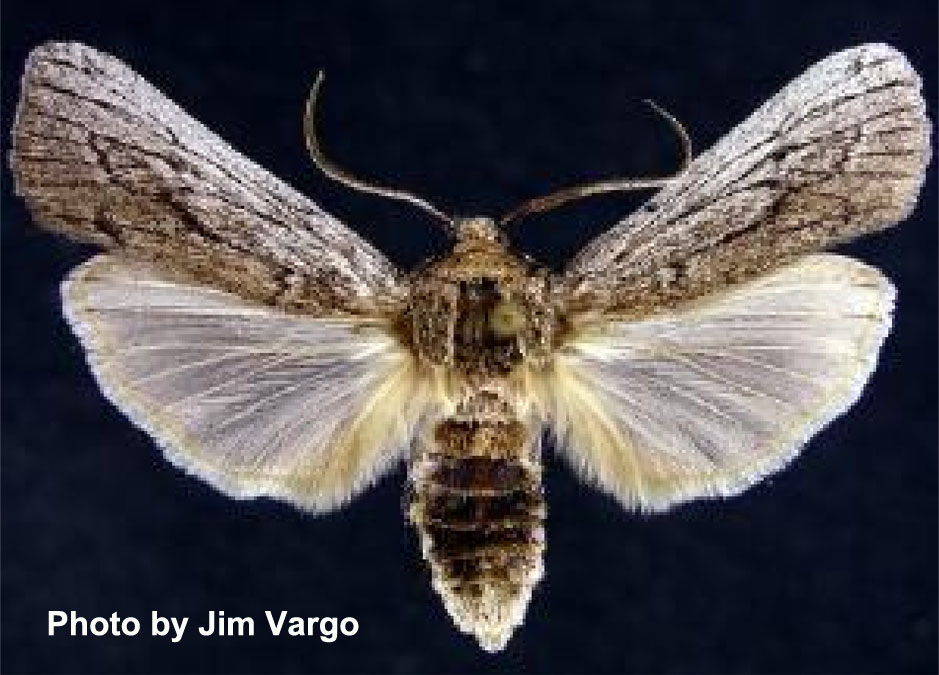Melitara subumbrella (Dyar)
Synonymy and Types
Olyca subumbrella Dyar, 1925, Ins. Insc. Mens., 13: 14.
Type locality: Carlsbad, New Mexico. Type deposition: National Museum of Natural History, Washington.
Olycella nephelepasa (in part) (Dyar), 1928, Proc. Ent. Soc. Washington 30: 134.
Olycella subumbrella, Heinrich, 1939, Proc. U.S. Natl. Mus. 86: 347
Diagnosis
Adult
Melitara subumbrella is most similar to M. junctolineella, but can be distinguished by the gray color of the forewings. The eighth tergite of the female has a distinctively bilobed anterior margin (Heinrich, 1956), but it is unclear if this differs from M. junctolineella, based on Heinrich's illustration of the latter species.
Larva
Similar in appearance to M. junctolineella. According to Mann (1969), the transverse dorsoposterior bands on the body of the larva are pale purple in subumbrella rather than blue, or bluish black, as in junctolineella.
Distribution
This species occurs from Nebraska, Wyoming, and Idaho southward to western Texas, southern New Mexico, southern Arizona and southeastern California.
Life History and Larval Hosts
Life History: According to Mann (1969) young larvae of subumbrella prefer to feed on cactus fruit, whereas later instars tunnel in the cladodes. Final instar larvae sometimes tunnel into underground parts of the host. Pupation occurs outside the plant, usually in debris. Most individuals remain as pupae through the winter, and adults appear from March to May. A second generation occurs is some parts of the species range, with adults emerging during October or November. Flight periods of adults are late May, mid-June in Colorado, mid-June in Utah, mid-April in Panhandle of Texas, late March, mid-April, late April, early May, mid-May, early October, mid-October, mid-November in central and southwestern Texas, mid-June to early July in northern Arizona, late April to late May in southern Arizona, mid- to late April in southeastern California (Neunzig, 1997).
Hosts: Opuntia basilaris Engelmann and Bigelow, O. ficus-indica (L.), O. macrorhiza Engelmann var. macrorhiza, O. atrispina Griffiths, O. phaeacantha Engelmann, O. polyacantha Haworth, O. violaceae Engelmann var. macrocentra (Engelmann) (Neunzig, 1997).
References
Mann (1969), Neunzig (1997)


